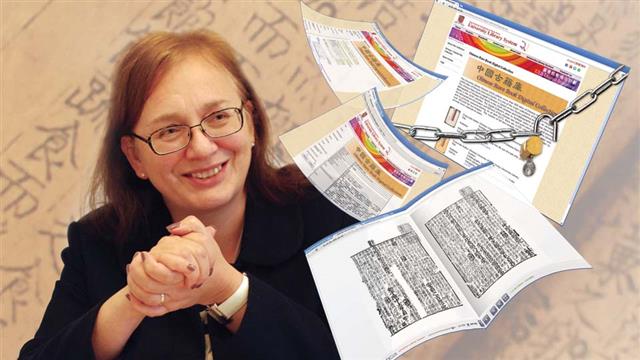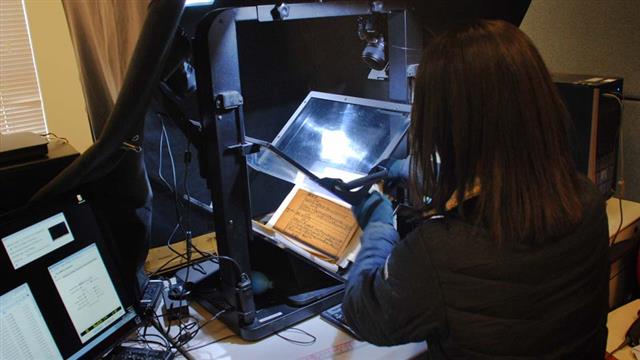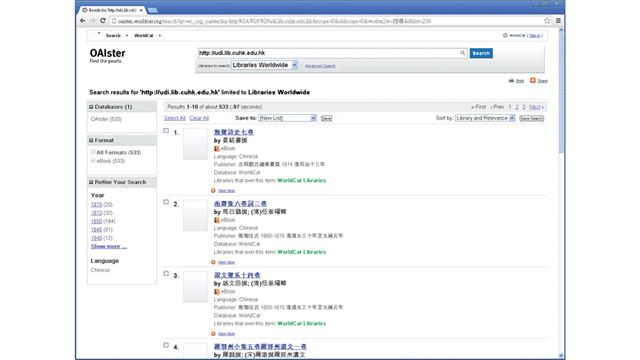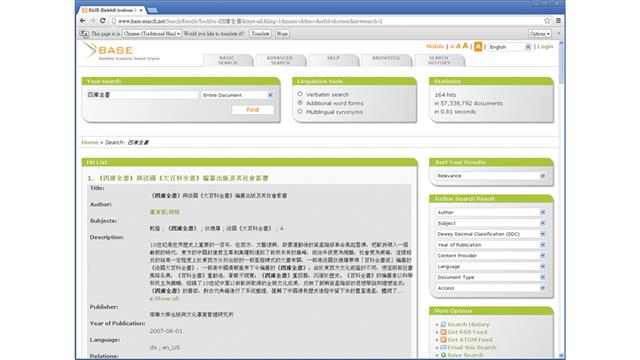Chinese rare books such as the Annotations to the Book of Changes, which is over 700 years old, used to sit quietly in the Rare Book Room of the University Library, awaiting visits by interested parties. Now, the invaluable collection has been digitized and made open-access. Anyone can connect to the Internet and go to the open-access repository to search, read and use those ancient books anywhere, any time.
The Chinese Rare Book Digital Collection is the University’s first fully open-access collection. This means, in addition to digitization, the texts and images are freely accessible; they can be downloaded, copied and distributed. In other words, the world community can share the fruits of research and enjoy access to precious materials.
The Library’s Chinese Rare Book Collection consists of more than 800 rare and over 4,000 semi-rare Chinese books—a major collection of its kind in Hong Kong. Based on An Annotated Bibliography of Chinese Rare Books in the CUHK Libraries and A Bibliography of Chinese Semi Rare Books in the CUHK Libraries, over 530 titles in over 2,100 volumes have been digitized to form the core of the open-access collection. The digital collection contains some 320,000 full-text images of rare books, mostly published during the Qing dynasty.
Open-access is a global movement in the academia, said Ms. Louise Jones, University Librarian, which has grown in the last 10 years, in part as a response to the continuing academic serials pricing crisis, but also in response to the opportunities created by the Internet. The spirit of free online access to scholarly resources without restrictions on re-use is broader than journal articles, and can encompass open-access archives, theses and dissertations, data, monographs and open educational resources. Implementing open-access is not without controversy as it is potentially disruptive to the traditional scholarly communications model.
Increasingly in the United States and Europe research funders are mandating open-access publication. The concept can be implemented in various ways. One way is to encourage researchers to publish their articles in open-access journals. This new generation of journals does not invoke copyright to restrict access to and use of the materials they publish, or charge subscription or access fees. Traditional journal publishers are also offering open-access articles and journals. Authors then pay an open-access fee or ‘article processing charge’ to finance the publication. Another way is for academics to deposit their publications in their institution’s open-access repository, usually after an embargo period agreed upon with the publishers. Institutions need to ensure that their repository conforms to international standards and can be harvested by search engines such as Google so the materials can be easily found.
The Library supports the spirit of expanded access to scholarly research and resources. Opening up a collection requires the prior approval of the publishers if material is still in copyright. It is a complicated issue and negotiations can take a long time. The Chinese Rare Book Collection was chosen as the first library digitization project to fully support open-access because there was no copyright concern with books written in the 16th or 17th century. Moreover, the collection’s uniqueness and the availability of a large corpus of texts also made it appropriate to be the pioneer.
Digitization is also one approach to preserving rare books, as once digitized, manual handling can be minimized. Rare books are vulnerable to the elements and extremely fragile. They are stored in the Rare Book Room where the temperature, humidity, and lighting are carefully monitored. The Library outsourced the project to a professional firm. To avoid transporting the books outside the Library, the scanning machine was moved to the digitization centre inside the Library so the books could be scanned in situ.
Ms. Jones said the Library made every effort to minimize the chance of damage to the ancient books during the process of digitization. Besides strictly monitoring the temperature and humidity of the digitization centre, the windows were blocked with black cardboard to prevent natural light from entering. The number of books transported to the centre was limited and books were returned to the Rare Book Room as soon as possible after scanning. Dust is harmful to books so the staff members handling the tomes were required to wear gloves.
The scanning machine was also carefully chosen. The one selected had a V-shaped cradle which allowed the books to be opened only a little bit (thus forming a V-shape when viewed from the side), instead of having to be opened widely as conventional overhead scanners would have dictated. This minimizes strain on the spine.
In 2014 the Library, in cooperation with the Graduate School, plans to launch another open-access collection. The target this time is the theses and dissertations of CUHK MPhil and PhD students dating back to 1963. It is estimated that there are over 12,000 items, involving over one million images being digitized as part of the project.
The Chinese Rare Book Digital Collection has been harvested into several well-known open-access repositories such as OpenDOAR (Directory of Open Access Repositories), ROAR (Registry of Open Access Repositories), OCLC WorldCat OAIster, Open Archives Initiative, and Base.






